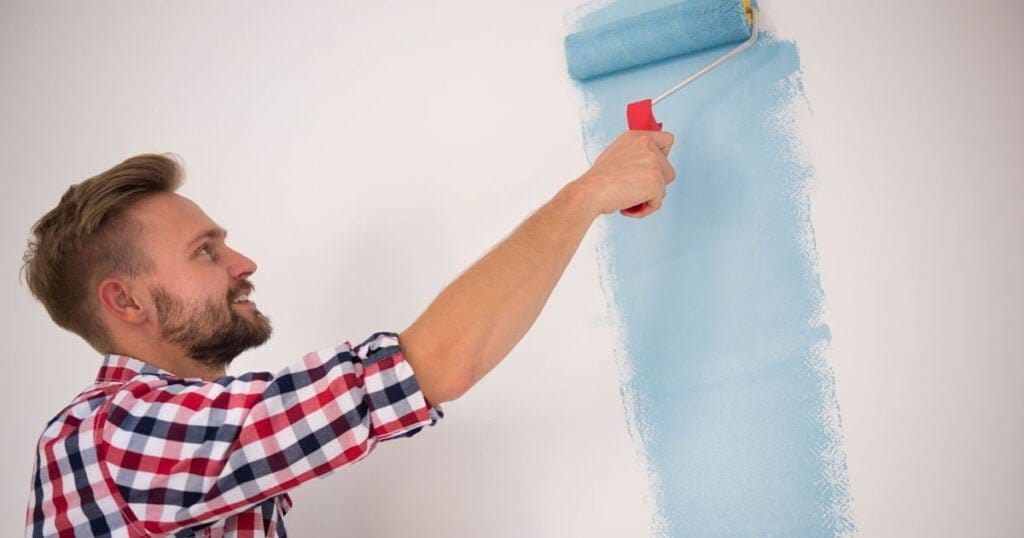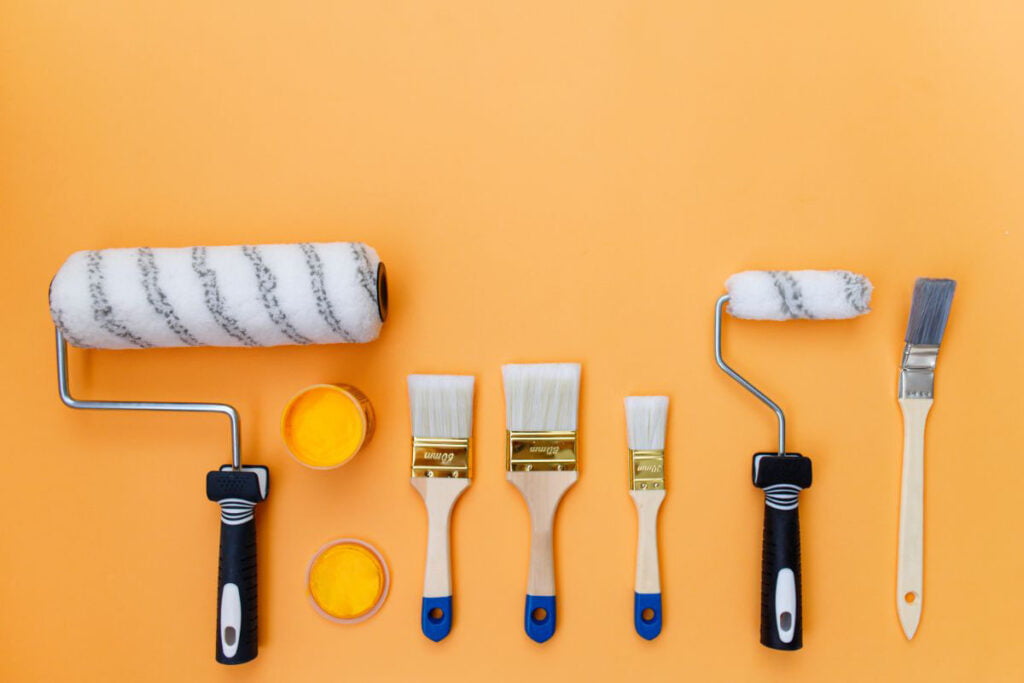
How to Prep a House for Painting
Preparing a house for paintingis essential to ensure a smooth and successful painting project. Whether hiring a professional painter or tackling the job yourself, proper preparation is the key to a flawless paint job. In this blog, we’ll go over the step-by-step painting process you need to take to prep your house for painting in West Hartford, CT.
Step 1: Clean the Surface
The first step on how to prepare a house painting in West Hartford, CT, is to clean the surface. This includes removing any dirt, dust, or debris from the walls, trim, and other surfaces that will be painted. You can use mild detergent and water to clean the walls or a pressure washer to remove any tough stains or dirt. If you’re planning to paint the exterior of your house, you’ll also want to remove any cobwebs, leaves, or other debris from the gutters, windows, and other areas.
Step 2: Repair any Damage
Once the surface is clean, you’ll need to repair any damage that may be present. This includes filling in any holes or cracks in the walls, sanding down rough spots, and smoothing out any uneven surfaces. If you’re planning to paint the exterior of your house, you’ll also want to check for any damage to the siding, trim, or gutters and make any necessary repairs. Consequently, if interior house painting in West Hartford, CT, is the only repair you need, painting over any damage can make the painting job easier and more efficient.
Step 3: Protect Furniture and Floors
Before you start painting in West Hartford, CT, you’ll need to protect your furniture and floors. This includes covering your furniture with drop cloths or plastic sheeting and covering your floors with plastic or tarps. If you’re planning to paint the interior of your house, you’ll also want to remove any pictures, curtains, or other items from the walls, as well as any outlet covers or switch plates.
Step 4: Prime the Surface
Once the surface is clean, repaired and protected, you’ll need to prime the surface. Priming is an important step in preparing your house for painting, as it helps to seal the surface and provide a smooth base for the paint. Depending on the type of paint you’ll be using, you can use a water- or oil-based primer.

Step 5: Paint
Finally, you’re ready to paint! Be sure to use the right paint for the surface you’re painting. For example, if you’re painting the exterior of your house, you’ll want to use paint specifically designed for exterior use. When painting, use the right tools, including paintbrushes, rollers, and tape.
FREQUENTLY ASKED QUESTIONS: How to Prepare a House for Painting
Like any other home improvement project, house painting brings safety hazards that may harm your and your family’s health. And if you’re adamant about painting your home yourself, you can always hire the best painting contractor in West Hartford, CT, to finish your paint job on your behalf. Here at West Hartford House Painting Experts, we can guarantee a professional-looking paint job at an affordable price. Contact us today to get started with a free quote for your paint job!
Professional painters typically follow these steps when preparing walls for painting:
- Remove furniture and cover floors and other surfaces with drop cloths to protect them from paint.
- Clean the walls: Use mild detergent and water to remove dirt, dust, and any other debris from the walls.
- Repair any damage: Fill in holes or cracks with spackling or joint compound and smooth sand.
- Sand the walls: Lightly sand the walls to remove any gloss or texture and to create a smooth surface for the paint to adhere to.
- Remove any remaining dust: Use a damp cloth or a vacuum cleaner with a dust brush attachment to remove any dust that may have settled on the walls during sanding.
- Prime the walls: Apply a coat of primer to help the paint adhere better and cover any stains or discolorations.
- Patch any imperfections: Look for imperfections and patch them with spackling or other appropriate compounds. Sand the patches as necessary.
- Caulk around trim and corners: Apply caulk to any gaps or cracks around trim, corners, and other areas where the wall meets other surfaces.
- Clean the walls again: Once all the prep work is done, clean the walls again to remove any dust or debris that may have settled during the preparation process.
- Allow everything to dry: Allow the walls, caulk, and patches to dry completely before painting.
By following these steps, professional painters in West Hartford, CT, can ensure that the walls are properly prepared for painting, resulting in a smooth, even finish.
Before painting a house, there are several steps that should be taken to ensure the best possible results:
- Prepare the surface: This includes cleaning the exterior of the house, filling in any cracks or holes, and sanding any rough areas.
- Protect surrounding areas: Cover any plants or landscaping near the house with plastic sheeting, and place drop cloths around the base of the house to catch any drips or spills.
- Choose the right paint: Select a paint suitable for the surface of your house and the climate in which you live.
- Gather necessary tools: Make sure you have all the necessary tools, such as paint brushes, rollers, trays, ladders, and painter’s tape.
- Test the paint: Before applying the paint to the entire house, test a small area to ensure you are happy with the color and finish.
- Start painting: Begin painting at the top of the house and work your way down, using the appropriate tools and techniques for the type of paint and surface.
- Clean up: Once the painting is complete, clean up any tools and materials, and dispose of any paint properly.
Removing old paint from the exterior of your house can be challenging, but it is an important step in preparing your house for a new paint job. Here are a few methods for removing old paint from the exterior of your house:
- Scraping: Use a paint scraper or a wire brush to scrape off as much of the old paint as possible. This is the most labor-intensive method, but it is also the most effective for removing large areas of paint.
- Sanding: Use a power sander or a sanding block to remove the remaining paint. Be sure to wear a dust mask and safety goggles to protect yourself from the dust generated by sanding.
- Chemical Stripper: Use a chemical paint stripper to soften and remove the paint. Follow the manufacturer’s instructions and use protective gear when using chemical paint strippers.
- Power Washing: Power washing can also be used to remove old paint, but it is not recommended for wood surfaces as it can damage the wood.
- Heat Gun: You can use a heat gun to soften the paint and make it easier to scrape off. But it is important to be careful as it can be dangerous and can also cause damage to the wood.
It is important to test the method in a small, inconspicuous area before removing the paint on a larger scale. Additionally, if you are dealing with lead-based paint, it is recommended to hire a professional trained to handle it safely.
Repairing cracks and holes in the exterior of your house is an important step in preparing your house for painting or other maintenance. To repair cracks and holes, you’ll need to fill them with a patching compound. You can use a pre-mixed joint compound or spackling paste for small cracks and holes. For larger cracks and holes, you may need to use a patching compound that can be mixed with water.
Once the compound is applied, smooth it out using a putty knife or a trowel. Allow the compound to dry completely before sanding it to create a smooth surface. You may need to use wood filler instead of a patching compound for cracks and holes on wood surfaces.
Once the filler is applied, smooth it out with a putty knife or a trowel. Allow it to dry completely before sanding it down. For large holes or holes located in structural parts of the house, it is recommended to hire a professional when house painting in West Hartford, CT. Remember that the repair surface should be cleaned, dry, and dust-free before applying any compounds.
It is not recommended to paint over peeling paint, as the new paint will not adhere properly and eventually peel. Removing all the peeling paint before applying new paint is best.
To protect landscaping and surrounding areas, cover plants and landscaping with plastic sheeting and place drop cloths around the base of the house to catch any drips or spills.
You can check if the surfaces are dry by touching them; if it feels cool or has no moisture, it’s ready to paint. You can also use a moisture meter to check the moisture level of the surfaces.
Transform Your House with West Hartford House Painting Experts
In conclusion, preparing a house for painting in West Hartford, CT, is important in ensuring a smooth and successful painting project. By following these steps, you’ll be able to clean, repair, protect, prime, and paint your house confidently, resulting in a flawless paint job that will last for years.
West Hartford House Painting Experts offer professional house painting services that will transform your home into something new. With their expertise, your house will look brand new in no time. Contact West Hartford House Painting Experts today and get started on your painting project. You won’t regret it!
